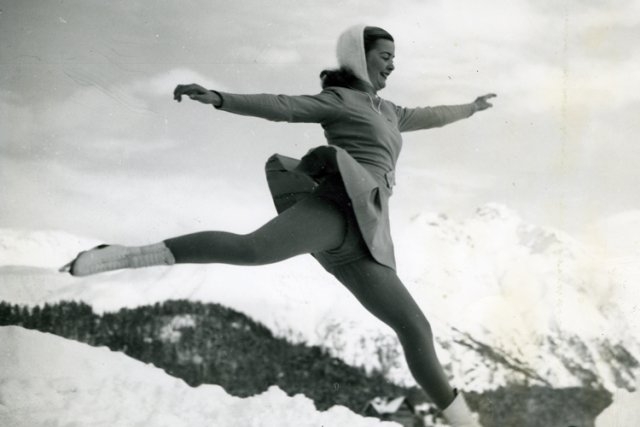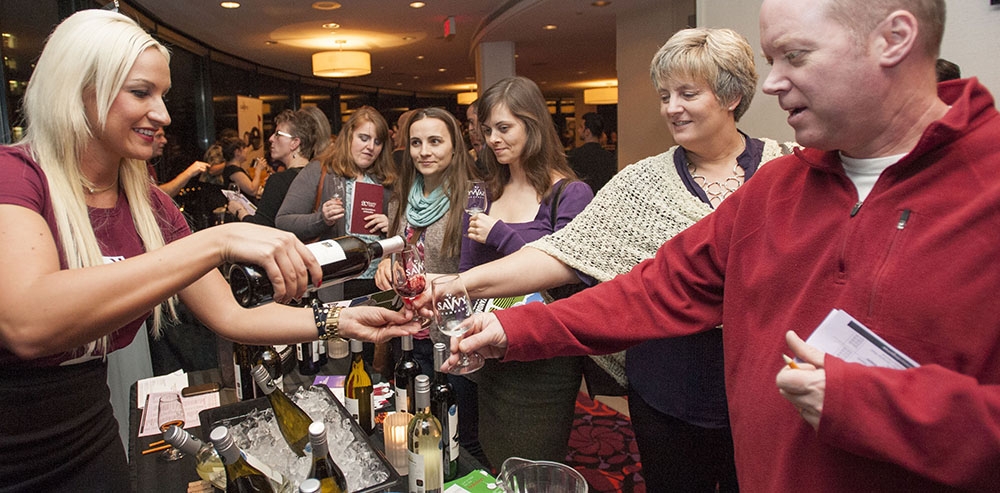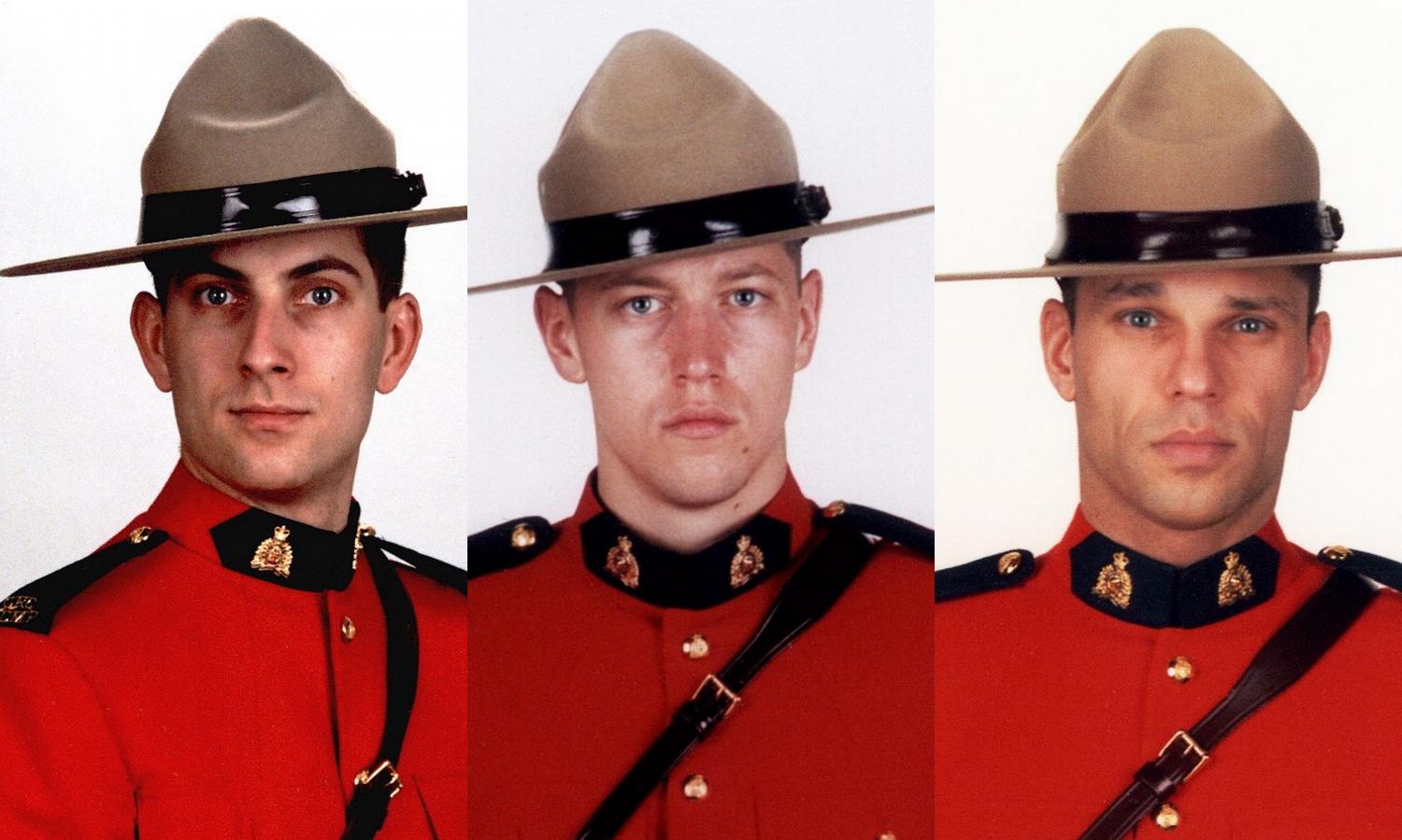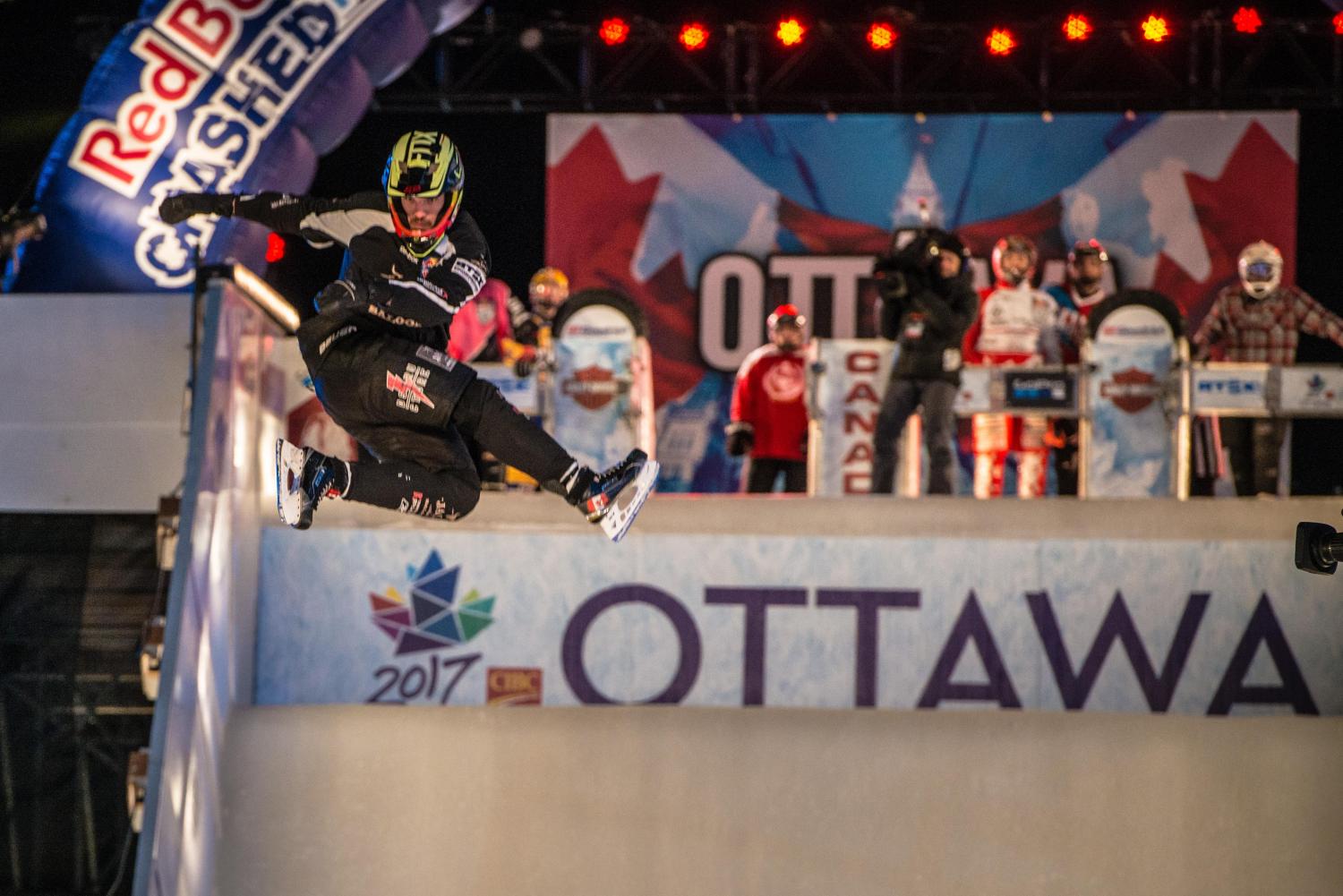
Red Bull Crashed Ice Lives Up to the Hype
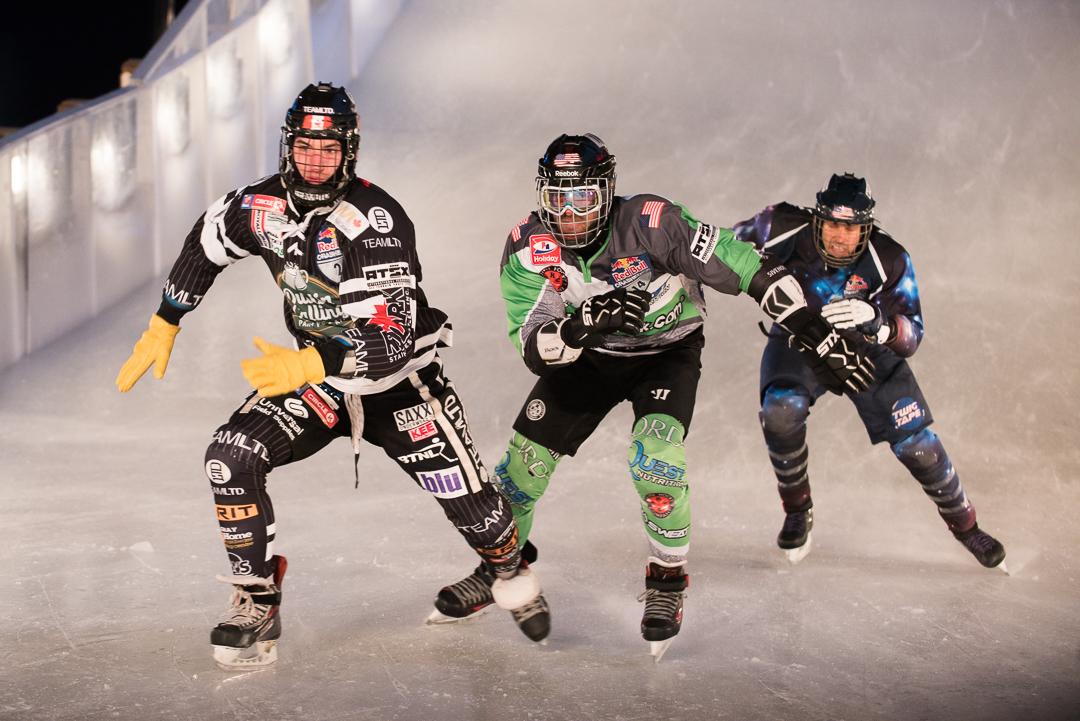
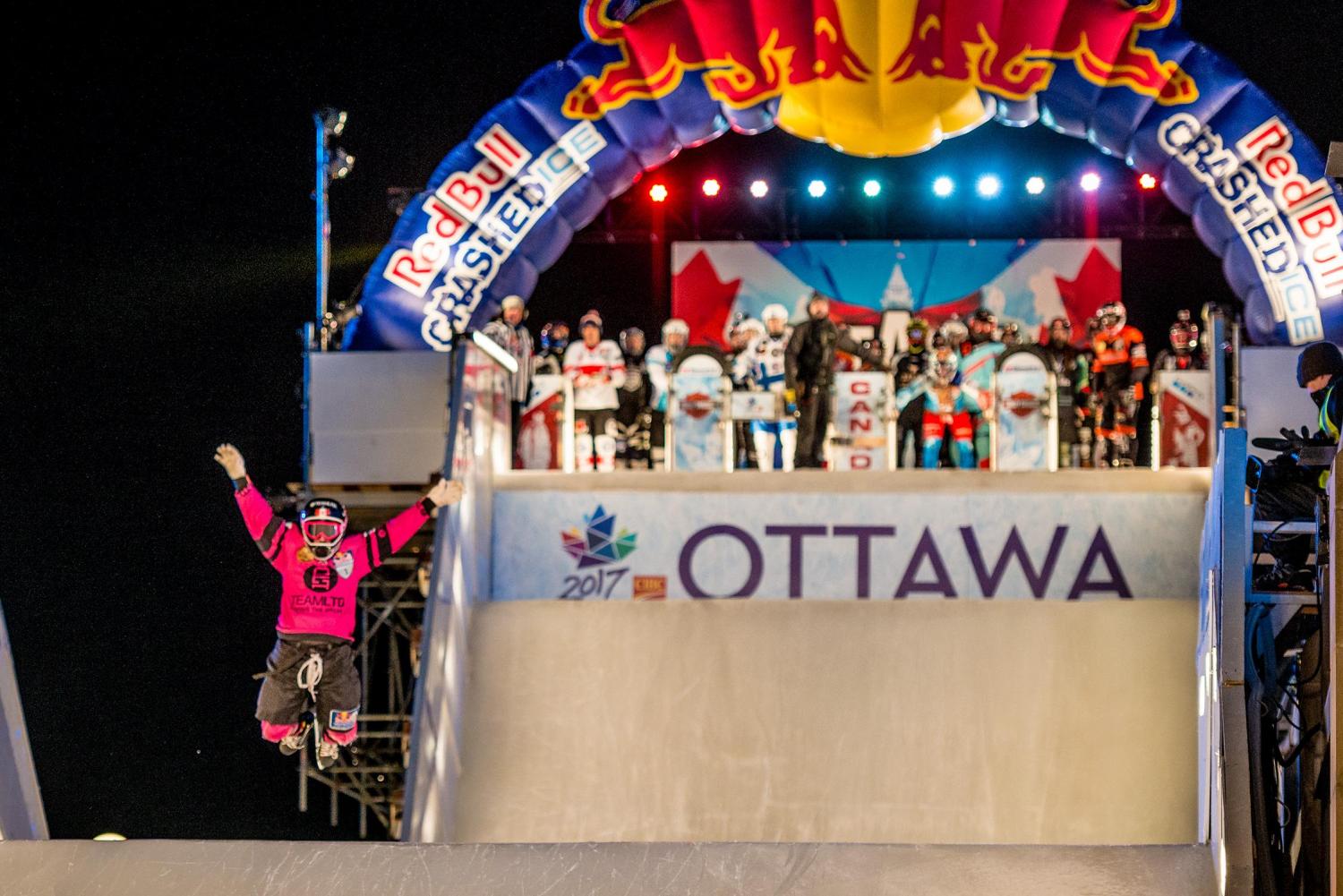
Story by Emily Jefferies and Emily Cordonier
Photos by Sean Sisk and Kamara Morozuk
There has been an excited buzz in Ottawa leading up to the much anticipated Red Bull Crashed Ice event. Over the past few weeks, curious onlookers have been stopping by the Rideau Locks to get a glance at the impressive Crashed Ice race track. The awe inspiring course took over 10 thousand hours to construct, and it’s easy to see why. It begins up at the Chateau Laurier with a breathtakingly steep freefall and continues along a harrowing, obstacle filled track, until racers ultimately cross the finish line down near the Ottawa River.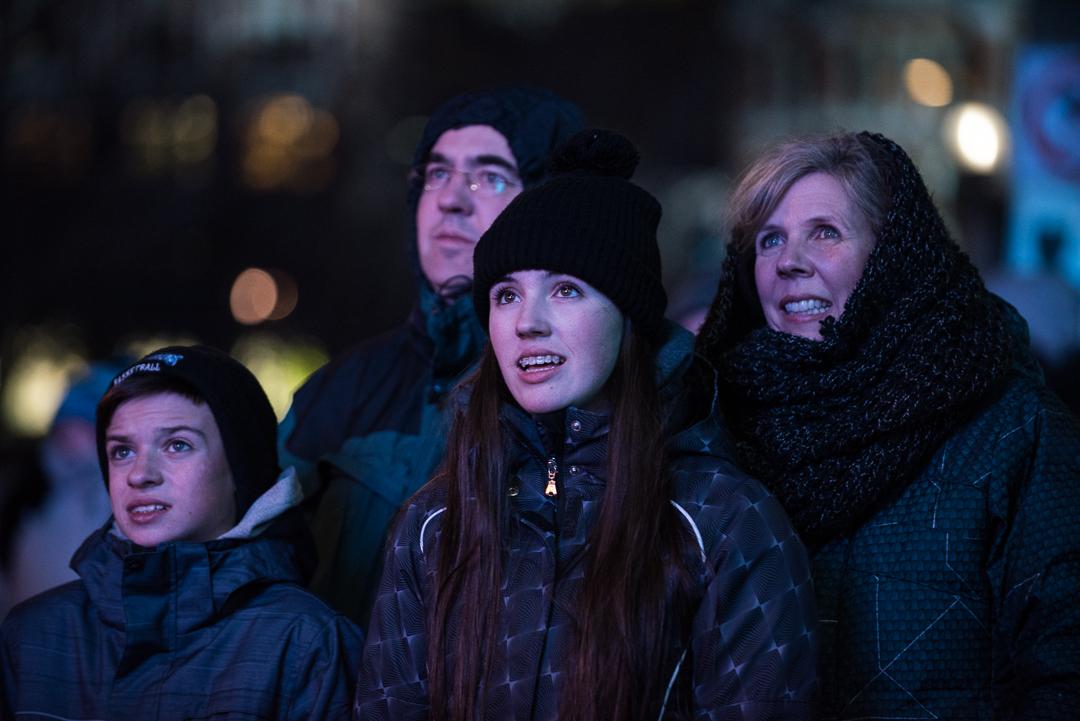
So, it came as no surprise that a crowd of nearly twenty thousand people showed up Friday evening to take in the opening night of the much-hyped event. Friday’s Red Bull Crashed Ice competition showcased the Junior World Championship with athletes between the ages of 16-21 years old taking part. This year marked the first time ever the junior division was included in Crashed Ice.
Even with the frighteningly cold temperatures, there was a party atmosphere all night long. Bright, colourful lights reflected off Parliament and the Chateau Laurier, illuminating a gorgeous scene at the historical location. A d.j. pumped out loud and energetic dance tunes, while humorous play by play announcers explained the events to newcomers taking in the action for the first time. In between race heats, fans were treated to some impressive stunts by professional skaters showing off jumps and flips.
The crowd did thin out as the qualifying heats began to wind down. It was simply too cold out. Only the hardiest (and most prepared) fans were able to brave the freezing temperatures and stay by the race track from the start to finish. But as the dozens of competitors were inevitably whittled down to sixteen in the playoff rounds, fans returned and the energy picked up once again.
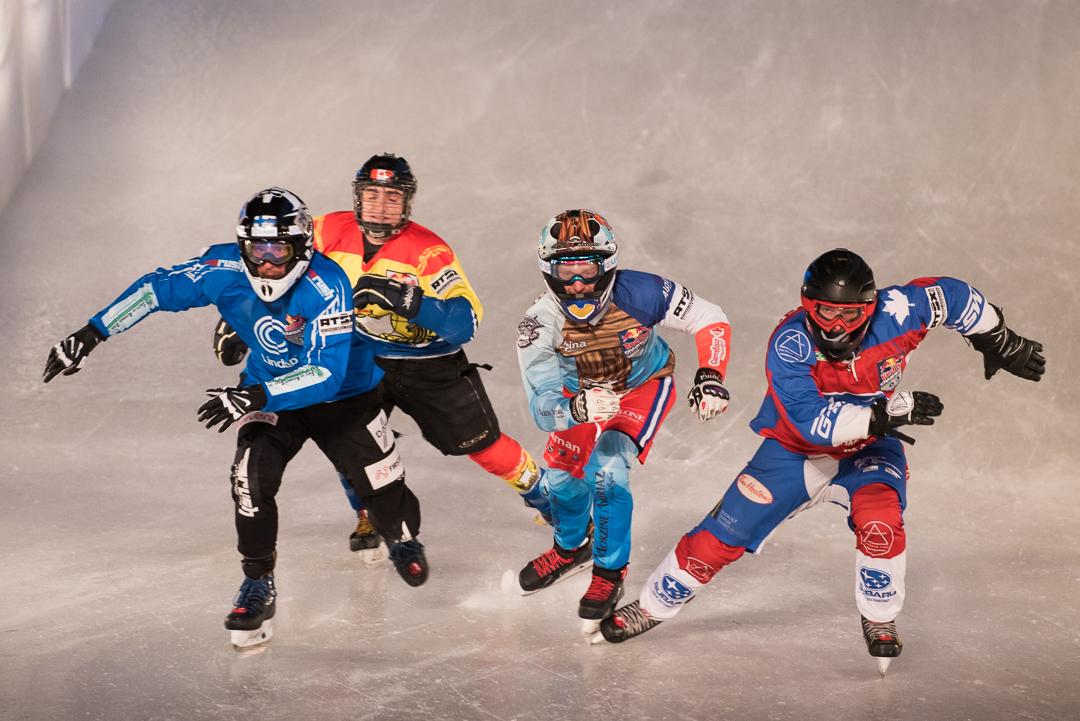
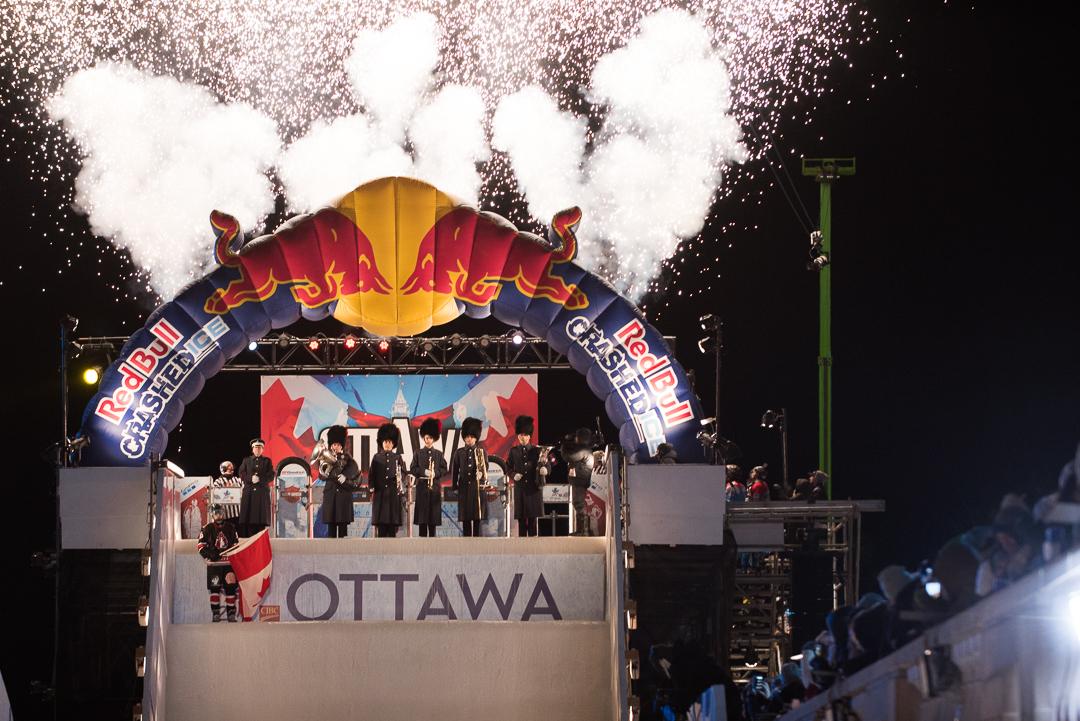
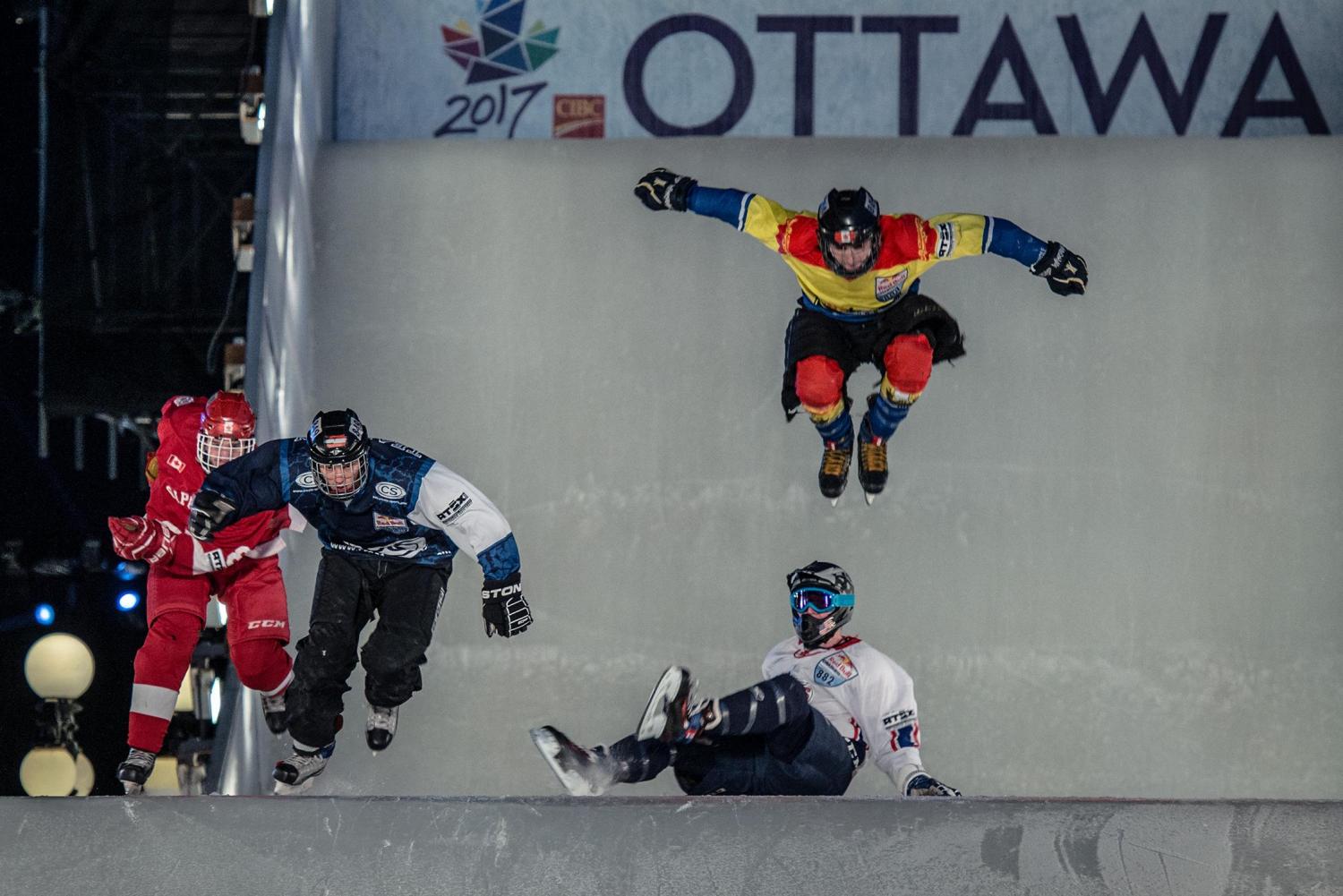
It was easy to be struck by the athleticism and fearlessness of the young athletes taking part in the championship. Junior competitors, travelling at speeds of up to 70 km/hr, managed to navigate tight turns, jumps and steep hill climbs race after race. To make it to the final, skaters had to race four times over the course of the evening. Legs must have been giving way to fatigue after skating the quarterfinals, semifinals and final back to back with almost no break in between races. Like true professionals, the young competitors still gave the final their every effort.
The last race of the night ended in a thrilling fashion, coming down to a photo finish. Three skaters crossed the line together, but it was Finland’s Mirko Lahti who was named the victor after narrowly beating out Canada’s Samuel Nadeau (2nd place) and Finland’s Joni Saarinen (3rd). Lahti, a 20-year-old who dominated the new J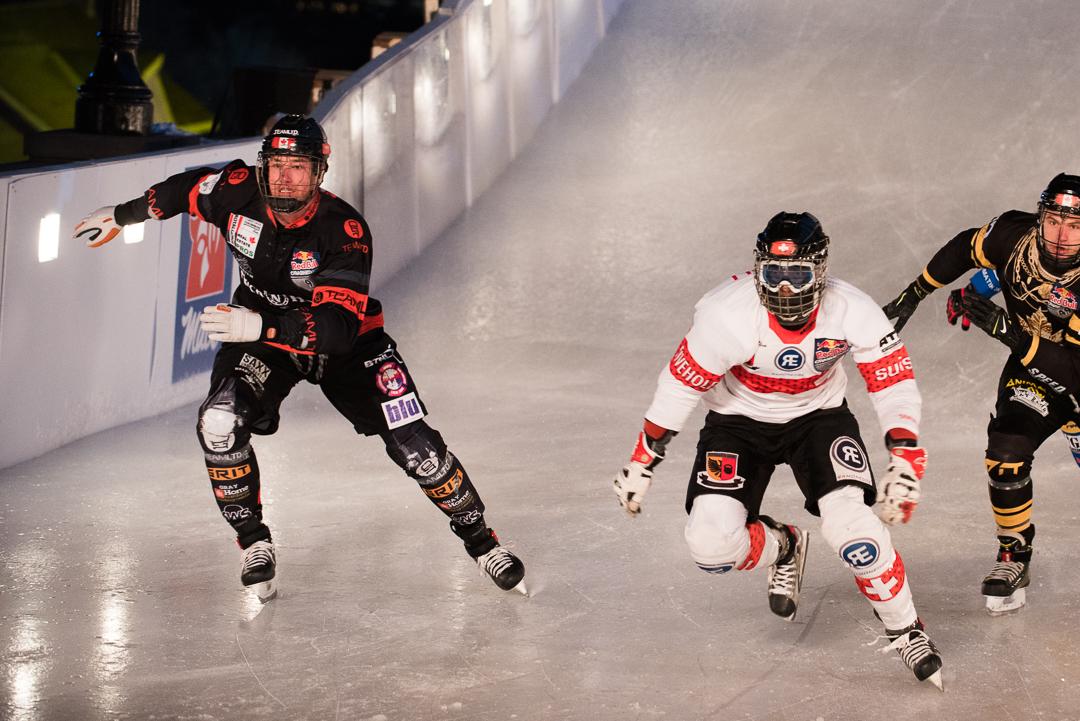 unior World Championship competition, was considered the favourite to win. Lahti opened a comfortable lead right from the start of the race and led throughout the course, but he stumbled on the final jump, allowing Nadeau and Saarinen to catch him. Lahti’s win Friday night gave him the highest number of overall points of any junior competitor and he was crowned the Junior World Champion for the 2016-2017 season.
unior World Championship competition, was considered the favourite to win. Lahti opened a comfortable lead right from the start of the race and led throughout the course, but he stumbled on the final jump, allowing Nadeau and Saarinen to catch him. Lahti’s win Friday night gave him the highest number of overall points of any junior competitor and he was crowned the Junior World Champion for the 2016-2017 season.
Night two of Crashed Ice took off with a bang for the world championships. The minus twenty temperature didn’t stop a crowd of more than fifty thousand people, including the Prime Minister and his sons, to watch the worldwide athletes take the course. Viewers and media crews began showing up at five to grab a spot. Little did they know the event wouldn’t start until seven-thirty. Nevertheless, as the majority of the crowd were proud Canadians, they braved the March 4th weather.
The evening started off with two freestylers testing the track to pump up the crowd. Then, the national anthem played as a skater carrying a large Canadian flag made his way down the course, eventually ending with fireworks to set the stage.
Cowbells and cheering filled the Rideau waterway as the first sets of athletes started the quarter-finals. The course starts with a sharp turn at the top, which mentally caught a lot of riders off guard throughout the night. Three athletes took a hard hit into the barrier at that turn, almost taking out the light fixtures and one rider’s back. The last two bumps definitely tripped up a lot of skaters as many tumbled over each other crossing the line.
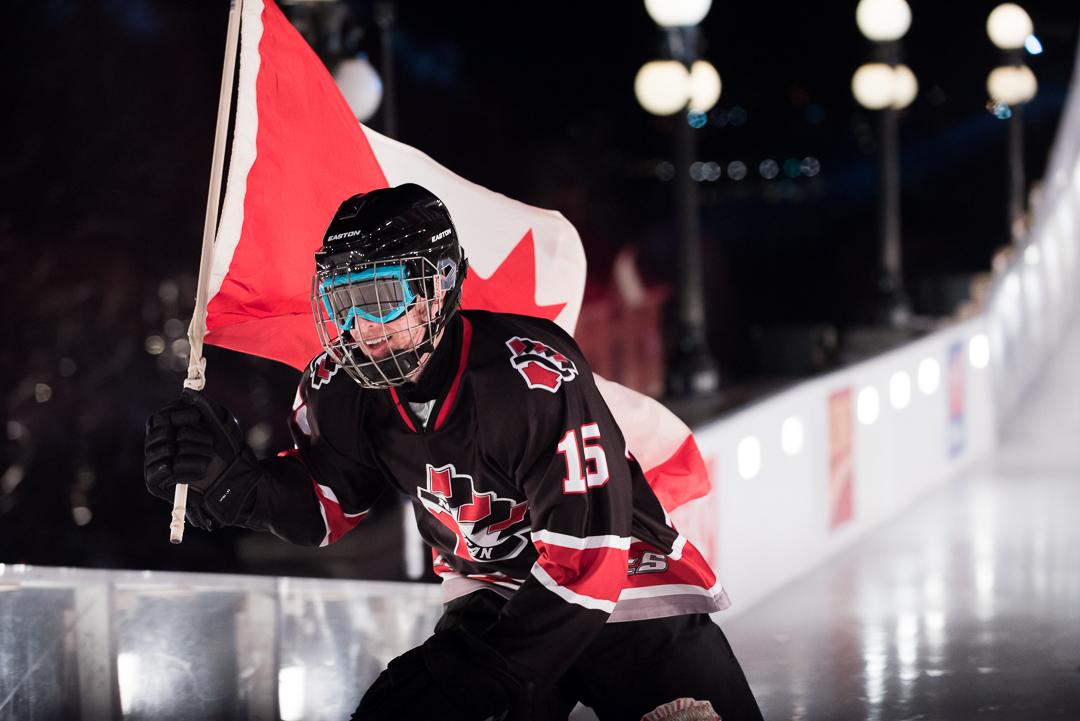
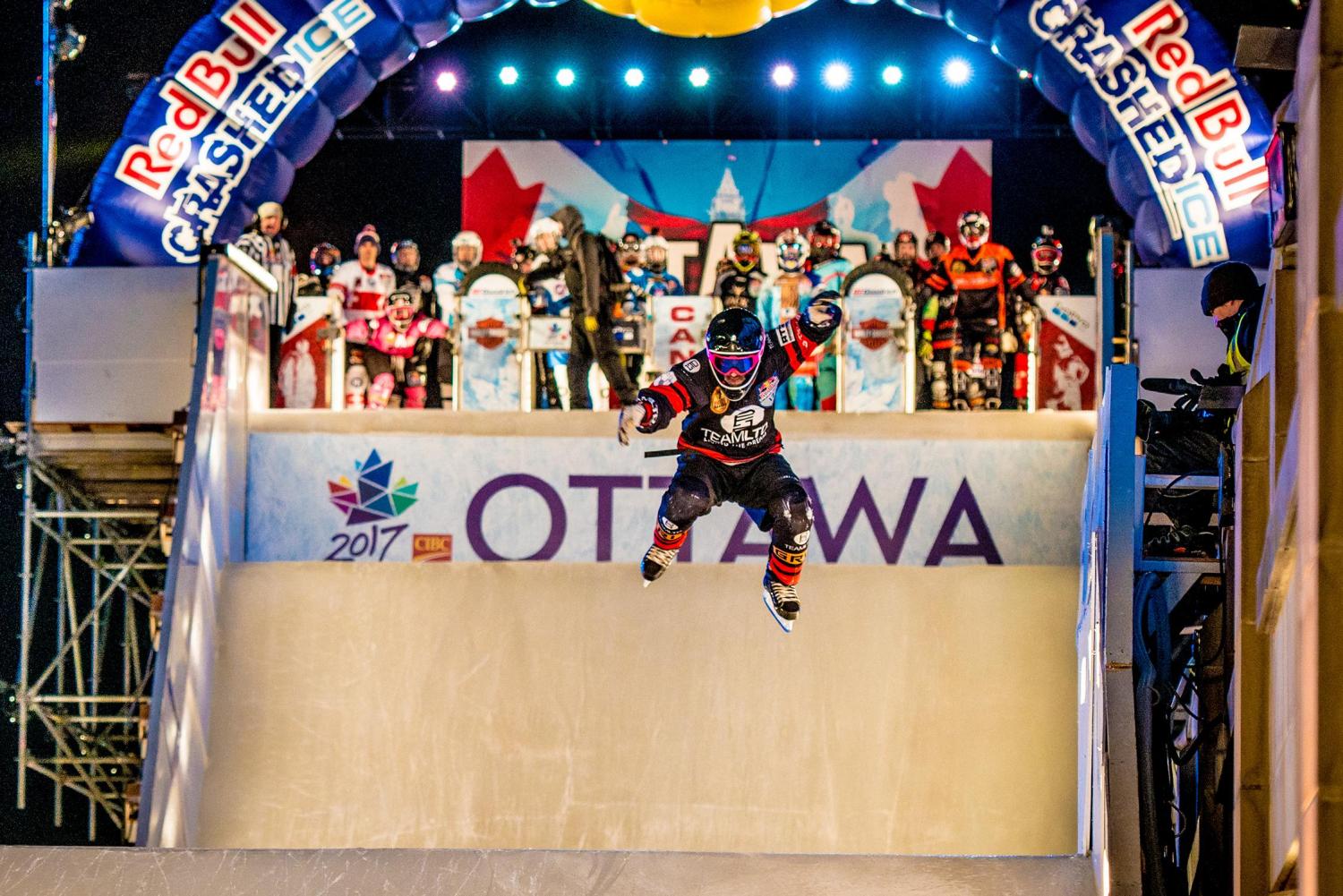
Minnestota’s Tommy Mertz gave the crowd quite a show when he slid most of the way down in the semi-finals, eventually ending back on his feet across the finish line, making it into the finals. Mississauga’s Scott Croxall did an amazing superman-cheetah move on the last mini hill that also took him into the finals. Eventually the countdown was on for Canada’s Dean Moriarity, Scott Croxall, America’s Cameron Naasz, and Switzerland’s Jim De Paoli.
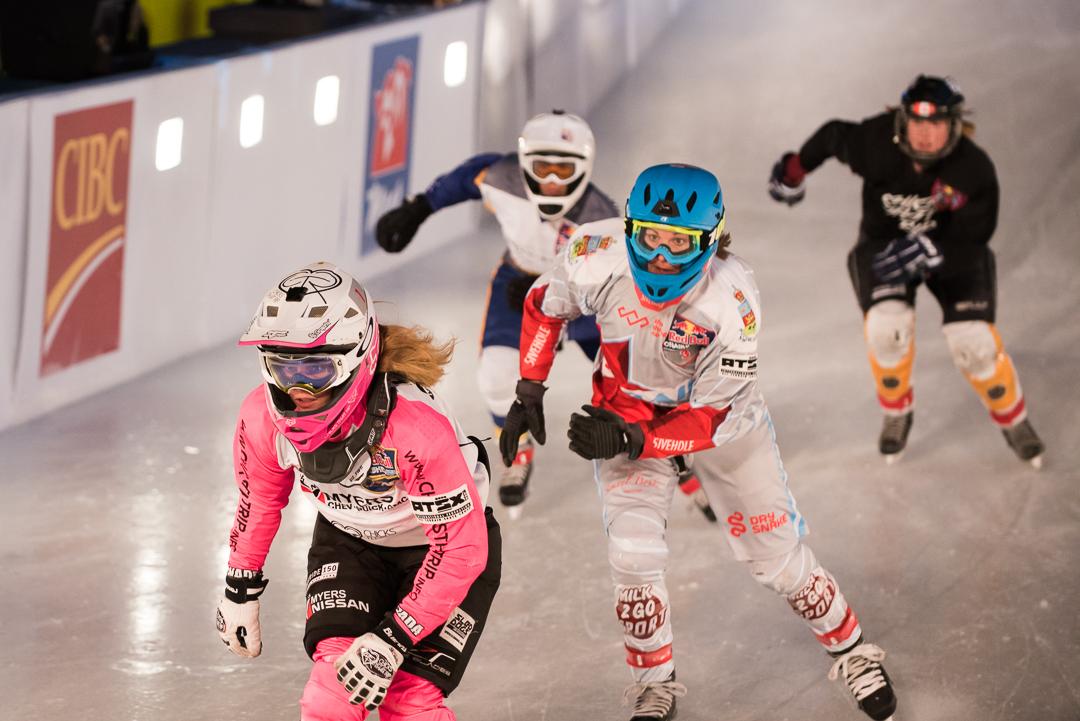
The women also did an incredible job tackling the 375m track. It came down to Japan’s Junko Yamamoto and Canada’s Maxie Plante, Elaine Topolinisky and Jacqueline Legere.
As temperatures dropped, the ice became more and more brittle. But regardless, the skaters and mass crowd pushed through. All eyes were on deck as it came down to the final race.
Naasz came rolling through first, Moriarity second, De Paoli third, and after a hard crash at the start Croxall came in fourth. Stuntwoman Legere flew into first, Plante second, Topolinisky third, and Yamamoto ended in fourth, making it an all-Canadian podium. A truly amazing finish to a two-hour event.
During the press conference, the back-to-back men’s world champion Naasz mentioned how he would love to see downhill skating become an Olympic sport. The back-to-back women’s champ Legere also commented on how well this sport is picking up for women, but wants to see it grow just as equally. Only time will tell for both.
Overall, it was an honestly heart-pounding experience for the coldest and fastest sport on skates in the world.
The year of festivities has only just begun for Canada’s capital.

